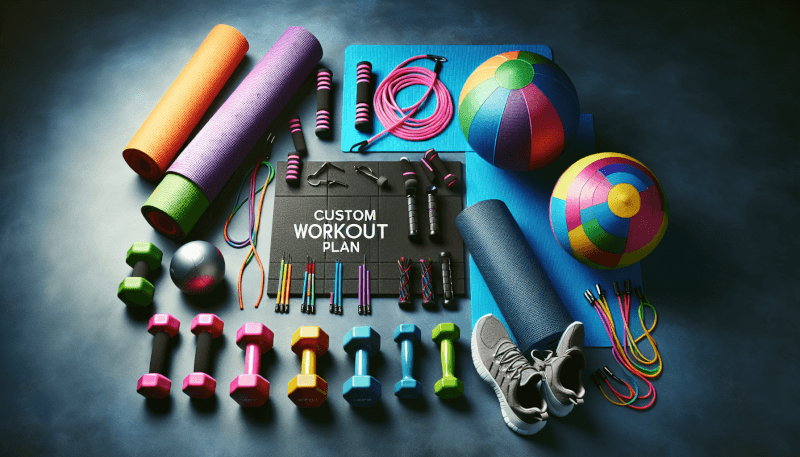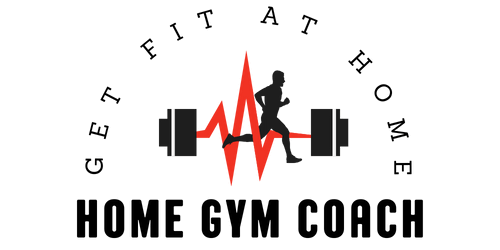Have you ever struggled to find a workout plan that actually works for you? Look no further! In this article, we will explore the key components of an effective custom workout plan that will help you achieve your fitness goals. From setting specific objectives to tailoring exercises to your fitness level, we will guide you through the essential elements that make a workout plan truly personalized and effective. Whether you are a fitness enthusiast or just getting started on your fitness journey, this article is here to help you create a workout plan that is perfectly suited to your needs and preferences. So let’s get started and uncover the secrets to a successful custom workout plan!

Setting Clear Goals
Setting clear goals is an essential first step when creating a custom workout plan. It’s important to have a clear vision of what you want to achieve in order to stay focused and motivated throughout your fitness journey. Whether your goal is to lose weight, build muscle, increase endurance, or improve overall fitness, defining your goals will help you tailor your workout plan to meet your specific needs.
Assessing Fitness Level
Before diving into any exercise regimen, it’s important to assess your current fitness level. This will help you determine where you stand and enable you to set realistic goals. Consulting with a professional, such as a personal trainer or exercise physiologist, can provide valuable insights and guidance. These professionals can assess your current fitness level through various tests and evaluations, including cardiovascular endurance, strength, flexibility, and body composition.
Choosing the Right Exercises
Selecting the right exercises is crucial for an effective custom workout plan. Identifying target areas that you want to focus on, such as arms, legs, or core, will help you choose exercises that specifically target those areas. Additionally, considering personal preferences is key to ensuring that you enjoy the exercises you engage in. This will not only make your workouts more enjoyable but also keep you motivated to stick to your plan. Variation in exercise types is important to prevent boredom and challenge your body in different ways.
Creating a Structured Schedule
Once you have identified your goals and exercises, it’s time to create a structured schedule for your workouts. Determining the frequency of your workouts is important for consistency and progress. Depending on your fitness level and goals, you may choose to work out three, four, or even five days a week. Allocating specific time slots for your workouts and integrating them into your daily routine will help ensure that you prioritize your fitness activities. It’s also important to balance different exercise types, such as cardiovascular, strength training, and flexibility exercises, throughout the week for a well-rounded routine.

Progressive Overload
Progressive overload is a principle that involves gradually increasing the intensity and demands of your workouts over time. This principle is important to continue challenging your body and stimulate growth and improvement. Gradually increasing the intensity of your exercises can be achieved through increasing weights, repetitions, or duration. Adjusting the exercise volume, which refers to the number of sets and repetitions performed, is also crucial to progressive overload. Additionally, incorporating progression techniques such as drop sets, supersets, or intervals can further enhance your workout plan.
Proper Warm-up and Cool-down
Before diving into any workout, it’s essential to properly warm up your body to prepare it for the upcoming physical demands. Dynamic warm-up exercises, such as leg swings, arm circles, and jogging in place, increase blood flow, raise body temperature, and loosen up the muscles. Mobility exercises that focus on joint mobility and flexibility should also be included in your warm-up routine. Lastly, static stretching, performed after your workout or during the cool-down, can help improve flexibility and prevent muscle soreness.

Choosing Appropriate Resistance
Choosing the appropriate resistance for your exercises is crucial for maximizing the effectiveness of your custom workout plan. Determining the optimal resistance amount involves finding a weight or level of difficulty that challenges you without compromising your form or risking injury. Proper form should always take precedence over the amount of weight lifted. As you progress in your fitness journey, managing resistance progression is important to continuously challenge your muscles and encourage growth and improvement. Gradually increasing the weight or resistance used will help you avoid plateaus and continue making progress.
Tracking Progress
Tracking your progress is an important aspect of any custom workout plan. Keeping exercise logs, whether in a notebook or through fitness apps, can help you monitor your workouts, track your progress, and identify areas for improvement. In addition to logging your exercises, measuring performance metrics such as repetitions, weights lifted, or distance covered can provide valuable insight into your progress. Periodic evaluations, such as body measurements or body fat percentage assessments, can further help you assess your progress and make necessary adjustments to your workout plan.

Incorporating Rest Days
Rest days are just as important as workout days in a custom workout plan. Understanding the importance of rest is crucial for allowing your body to recover and adapt to the physical stress of exercise. Overtraining or neglecting rest days can lead to fatigue, decreased performance, and increased risk of injury. Scheduling regular recovery days throughout your week is essential to prevent burnout and promote proper muscle repair and growth. Rest days can include light activities such as walking or stretching to help rejuvenate your body without placing additional stress on your muscles.
Adapting to Individual Needs
Every individual is unique, and it’s important to adapt your workout plan to cater to your specific needs and limitations. Considering any physical limitations or injuries is crucial when selecting exercises and intensity levels. Modifying exercises to accommodate your abilities is essential to prevent further injury and ensure safe and effective workouts. Additionally, taking recovery time into account is vital for allowing your body to heal and prevent overexertion. It’s important to listen to your body, make necessary modifications, and seek professional advice if needed to ensure a personalized and effective workout plan.
In conclusion, a comprehensive and effective custom workout plan consists of several key components. Setting clear goals, assessing your fitness level, choosing the right exercises, creating a structured schedule, implementing progressive overload, incorporating proper warm-up and cool-down routines, selecting appropriate resistance, tracking progress, incorporating rest days, and adapting to individual needs are all crucial elements. By following these components, you can create a tailored workout plan that suits your goals and abilities, setting yourself up for success on your fitness journey.



